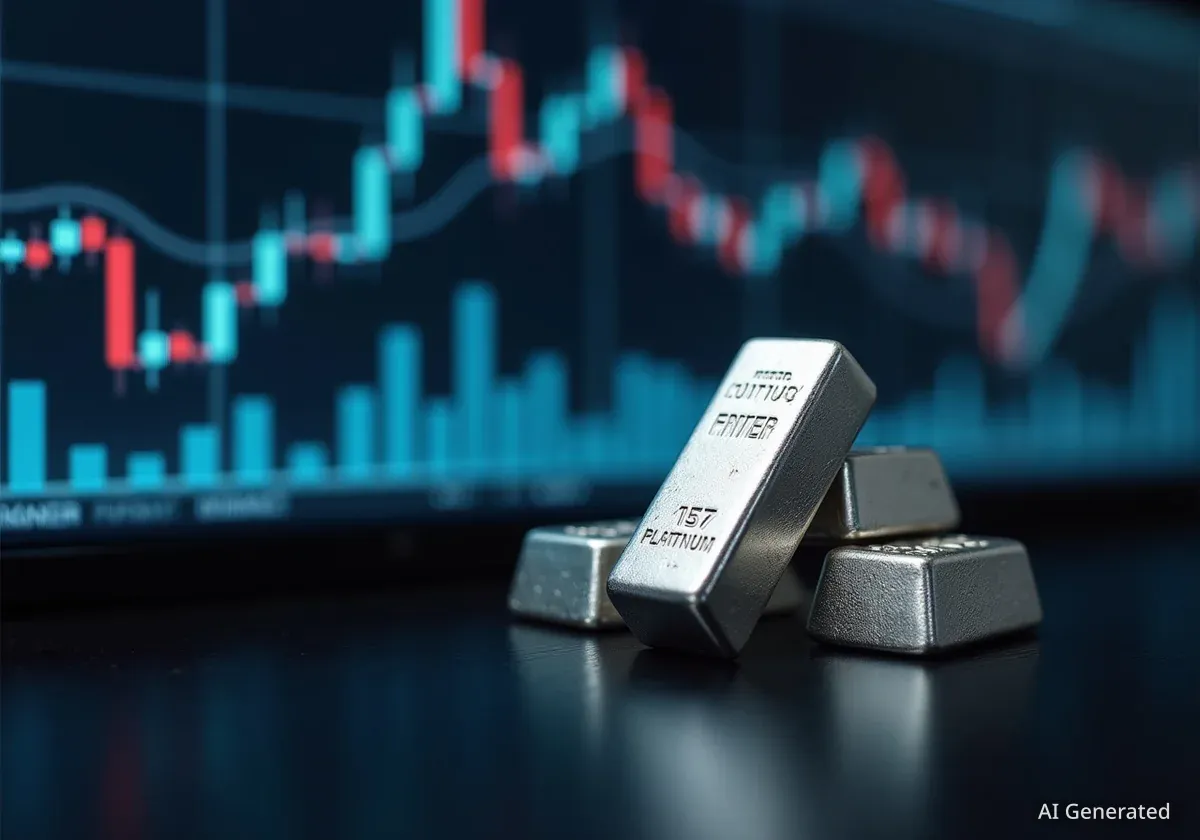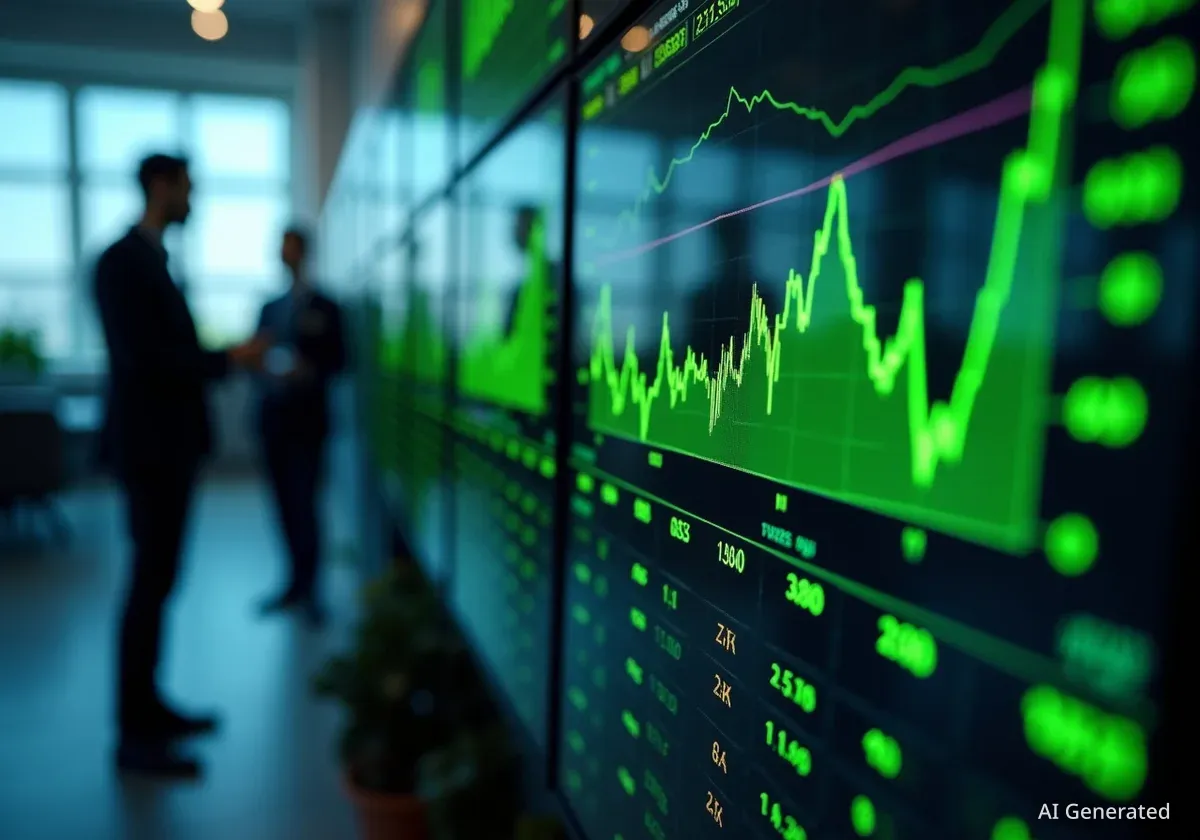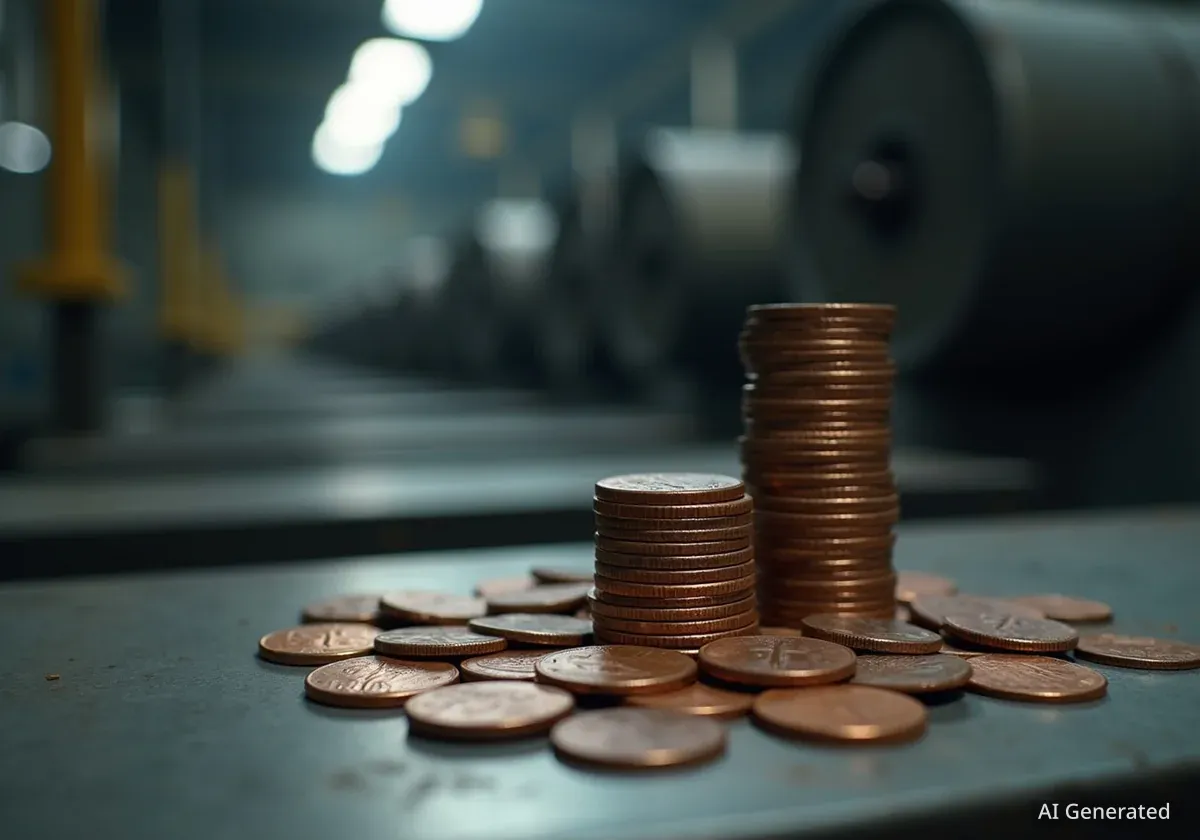Following a significant rally in gold prices, investors are now turning their attention to platinum, which has shown recent strength and is considered by some analysts to be undervalued. Market participants are closely watching key U.S. inflation data this week, which is expected to heavily influence the direction of precious metals and the U.S. dollar.
Key Takeaways
- Platinum prices are rising as investors seek alternatives to gold, which has recently experienced a major price breakout.
- The upcoming U.S. Core Personal Consumption Expenditures (PCE) inflation report is a critical catalyst for the entire precious metals complex.
- Platinum's dual role as both a precious metal and an industrial component gives it a unique market position.
- While gold is trading near record highs, platinum remains well below its historical peaks, suggesting potential for significant upward movement.
Gold's Breakout Creates a Positive Environment
The precious metals market has been dominated by gold's impressive performance. The yellow metal recently broke out to new highs, driven by a combination of factors including expectations of interest rate cuts by the Federal Reserve, geopolitical instability, and consistent buying from central banks.
This strong performance in gold often has a spillover effect on other precious metals. When the leading asset in a sector performs well, it tends to draw investor capital and positive sentiment to related assets. Silver has already seen a significant price increase, and now platinum is beginning to attract similar attention.
The market is now in a state of anticipation, waiting for the next major economic indicator. According to market analysts, the upcoming Core PCE data will be a pivotal moment. This report is the Federal Reserve's preferred measure of inflation and will provide crucial clues about the future path of monetary policy.
Why the PCE Report Matters
The Personal Consumption Expenditures (PCE) price index measures changes in the prices of goods and services consumed by households. The "core" version excludes volatile food and energy prices. A higher-than-expected inflation reading could lead the Federal Reserve to delay interest rate cuts, which would typically strengthen the U.S. dollar and put pressure on non-yielding assets like gold and platinum. Conversely, a soft inflation number could accelerate the timeline for rate cuts, weakening the dollar and boosting precious metals.
The Case for Platinum's Potential
Platinum is currently trading at a significant discount to gold, a historical anomaly that has caught the eye of many investors. The gold-to-platinum ratio, which measures how many ounces of platinum are needed to buy one ounce of gold, remains at elevated levels. This suggests that, relative to gold, platinum may be undervalued.
Unlike gold, which is primarily a monetary asset, platinum has substantial industrial demand. It is a critical component in catalytic converters for automobiles, particularly diesel engines. It is also used in jewelry, chemical processing, and medical devices.
Industrial Demand as a Key Driver
The outlook for platinum's industrial demand is mixed but shows signs of promise. While the shift to electric vehicles (EVs) poses a long-term threat to its use in traditional engines, platinum is also a key catalyst in hydrogen fuel cells. As the green hydrogen economy develops, demand for platinum is expected to grow significantly.
Furthermore, stricter emissions standards globally are forcing automakers to use more platinum group metals (PGMs) in each vehicle's catalytic converter to meet compliance. This trend helps to offset some of the demand reduction from declining diesel vehicle sales in certain regions.
Platinum vs. Gold: A Price Comparison
Historically, platinum has often traded at a premium to gold. However, in recent years, this relationship has inverted. While gold recently surpassed $2,400 per ounce, platinum has traded around the $1,000 per ounce mark, a gap that many analysts believe is unsustainable in the long term.
Market Factors Influencing Precious Metals
The broader commodity and currency markets provide important context for the outlook on platinum. The performance of the U.S. dollar is a primary factor. A weaker dollar makes commodities priced in dollars, like precious metals, cheaper for buyers using other currencies, which tends to increase demand and prices.
The U.S. Dollar Index (DXY) has shown signs of a rebound, but this strength faces a major test with Friday's PCE data. If inflation comes in cooler than expected, the dollar could weaken, providing a significant tailwind for gold, silver, and platinum.
"The price prediction for precious metals this week hinges almost entirely on the Fed's preferred inflation gauge. A soft number could trigger a fresh breakout, while a hot reading might lead to a short-term pullback."
Contrasting Energy Market Signals
While precious metals are showing bullish signs, the energy sector presents a more cautious picture. Crude oil prices have a bearish outlook, trading below their 52-week average. Concerns about slowing global demand and uncertainty around OPEC+ production cuts are weighing on the market.
Natural gas markets are also facing challenges, with prices defending a key support level amid mounting risks. This divergence between precious metals and energy highlights how different macroeconomic factors are influencing various parts of the commodity complex. The optimism in metals is largely tied to monetary policy and its role as a store of value, whereas energy is more sensitive to global economic growth and industrial activity.
Outlook and Key Levels to Watch
For platinum, the immediate focus is on its ability to build on recent gains. The metal showed a positive move of over 1.8%, signaling growing buying interest. A decisive break above recent resistance levels could open the door for a more sustained rally.
Key factors for investors to monitor include:
- The U.S. Core PCE Report: This is the most important near-term catalyst.
- The U.S. Dollar Index (DXY): A sustained move lower would be very bullish for platinum.
- Gold's Price Action: Continued strength in gold will likely support platinum sentiment.
- Industrial Demand News: Reports on auto sales and developments in the hydrogen economy will influence long-term fundamentals.
As gold takes a breather near its recent highs, platinum is stepping into the spotlight. Its relative value, combined with a unique mix of industrial and investment demand, makes it a compelling asset for investors looking for the next opportunity in the precious metals space. The market's next move, however, will likely be determined by this week's critical inflation data from the United States.





